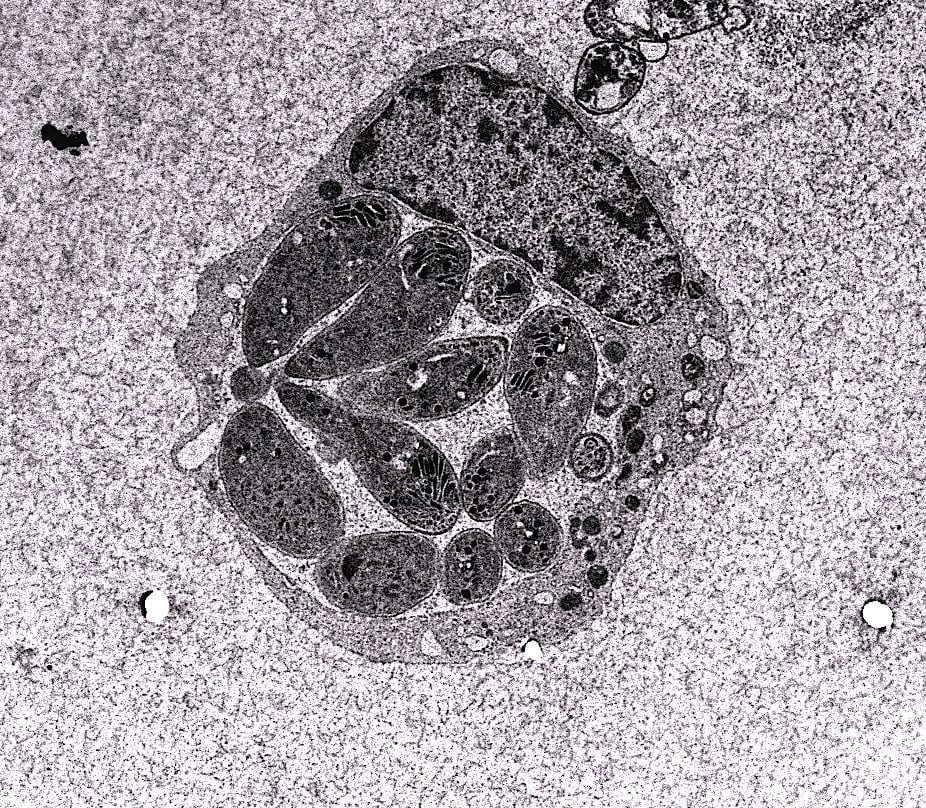Toxoplasma gondii: More Insights into Host-Pathogen Interactions
A special issue of Microorganisms (ISSN 2076-2607). This special issue belongs to the section "Parasitology".
Deadline for manuscript submissions: closed (30 June 2020) | Viewed by 21279
Special Issue Editor
Interests: host-parasite interaction; neuropathogens; therapeutics; public health
Special Issues, Collections and Topics in MDPI journals
Special Issue Information
Dear Colleagues,
Over one-third of the world’s human population have been said to be infected with Toxoplasma gondii. Besides its substantial medical and veterinary significance, this single-cell protozoan parasite has a remarkable ability to evade very powerful host immune defense mechanisms and cause disease. Significant and rapid progress has been made in the last few years in order to discover the factors, pathways, mechanisms, and molecules that shape this complex and dynamic host–pathogen relationship. A greater understanding of the strategies and mechanisms by which this parasite can wreak havoc, shut down multiple essential functions, and reprogram host cell signalling pathways could one day open the door to developing better ways to fighting what can be life-threatening infections, particularly in immunocompromised individuals. In this Special Issue, we hope to publish reviews and research articles that capture the novel aspects of the fascinating and dynamic interaction between T. gondii and its host. Topics that will be considered include, but are not limited to, the analysis of the molecular changes in the structure or function of host cells following T. gondii infection, understanding the host response to infection or to treatment with anti-Toxoplasma drugs, the functional analysis of specific parasite gene(s), and the discovery of new virulence factors or chemical signals that maintain host–parasite interactions

Figure 1. TEM micrograph of Toxoplasma gondii tachyzoites growing inside a vacuole within the host cell.
Dr. Hany Elsheikha
Guest Editor
Manuscript Submission Information
Manuscripts should be submitted online at www.mdpi.com by registering and logging in to this website. Once you are registered, click here to go to the submission form. Manuscripts can be submitted until the deadline. All submissions that pass pre-check are peer-reviewed. Accepted papers will be published continuously in the journal (as soon as accepted) and will be listed together on the special issue website. Research articles, review articles as well as short communications are invited. For planned papers, a title and short abstract (about 100 words) can be sent to the Editorial Office for announcement on this website.
Submitted manuscripts should not have been published previously, nor be under consideration for publication elsewhere (except conference proceedings papers). All manuscripts are thoroughly refereed through a single-blind peer-review process. A guide for authors and other relevant information for submission of manuscripts is available on the Instructions for Authors page. Microorganisms is an international peer-reviewed open access monthly journal published by MDPI.
Please visit the Instructions for Authors page before submitting a manuscript. The Article Processing Charge (APC) for publication in this open access journal is 2700 CHF (Swiss Francs). Submitted papers should be well formatted and use good English. Authors may use MDPI's English editing service prior to publication or during author revisions.
Keywords
- Biomarkers
- Evolution
- Gene editing
- Genomics
- Host–pathogen interactions
- Imaging
- Metabolomics
- Novel therapeutic strategies
- Proteomics
- Single-cell measurements
- Toxoplasma gondii
- Transcriptomics
- Virulence






